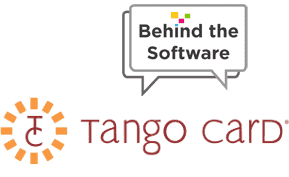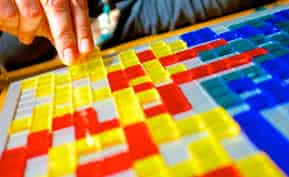Gamification
4 Ways to Gamify Your Human Resources Department

As in a game of chess, every decision made in human resources is strategic and critical. Using gamification in human resources is still a relatively new idea, but it has the potential to lighten the burden of making decisions regarding recruiting, training and integrating new hires.
Whether you have hundreds of applicants or ten, hiring new employees is stressful. Even after your human resources department has finally chosen new hires, the training process that follows can be costly and difficult. Following that, it’s still important to make sure productivity and morale remain high after new hires have been integrated into the team.
Gamification in the Workplace
At first glance, gamification doesn’t appear to be a valuable addition in the business world. However, gamification makes business processes more fun by incorporating game elements. Despite the fact that “games” in the workplace sounds a little controversial, these games assist with your company’s serious business-oriented goals. By tapping into our natural inclination toward competition and our innate desire for success, gamification turns dull lectures and tutorials into engaging and interactive learning tools, allowing leaders to stimulate engagement through their online communities.
Gartner estimates that more than 70% of global businesses will use at least one gamification application by the end of this year. Because gamification is so flexible and versatile, there are an abundance of unique ways you can gamify processes in your HR department.
1) Recruiting: Using Games to Assess Skills and Personality
One of the first and most important steps in the hiring process is recruiting. Utilizing gamification in the recruiting process is still a relatively new idea. However, using games is a fantastic way to go beyond a candidate’s resume to assess his or her skills.
For business owners on a budget, there are cheap (and free!) options to implement gamification into your recruiting system. Having potential recruits play games may seem a little strange, but utilizing apps such as Wasabi Waiter can provide indicators for how skilled candidates are at juggling multiple tasks and reacting quickly. Not only does the game provide a means for HR managers to assess potential candidates’ skills, but this inexpensive solution can provide insight into how well candidates process, prioritize and react to new information. It can even give recruiters an idea of how well candidates respond to certain social cues.
2) Employee Training: Using Games to Enhance Quality and Productivity
Hiring and training new employees is costly and time-consuming. Companies don’t want to throw new hires into work without any training, but can’t spare the time or money to hold their new employees’ hands. Yet HR departments can’t rely only on online training programs. On the other hand, because individuals are surrounded by so many widgets and gadgets, it’s becoming a challenge to keep them engaged with training programs. Even after a series of tutorials, lectures and videos, HR managers are still finding it difficult to ascertain how much information a new hire has actually retained.
Utilizing gamification has proved to be an effective means of training employees. Deloitte partnered with Badgeville to revamp the Deloitte Leadership Academy, which serves as an executive training program for more than 10,000 senior executives. By gamifying their leadership development programs and creating a system where users are acknowledged for their success and achievements, they turned the experience into one where participants are more inclined to engage.
Another fantastic gamification platform that can be used to train employees is IndusGeeks All Aboard. IndusGeeks All Aboard takes new employees and places them in virtual environments similar to their real-world work environments. By using IndusGeeks, employers can train new hires and painlessly acclimate them to their new work environments.
Other gamification solutions for training to consider:
- Bunchball
- Gameffective
- MindTickle
3) Achievement Recognition: Using Games to Foster Competition/Teamwork
Reward systems provide a means for management to recognize and reward employee achievement. At the same time, doling out acknowledgements and rewards can also promote a more competitive work environment. Incorporating friendly competition into the workplace is a good way to incentivize employees to generate better (and sometimes faster) results.
Companies such as Bunchball and Badgeville are seasoned veterans at utilizing the reward system to encourage higher engagement. The same programs that are used to train employees can be used to acknowledge achievements and facilitate healthy competition between co-workers. By building a reputation-based system, employers can encourage employees to work harder to attain a higher level of recognition. Reward-centered gamification creates an environment where employees can be recognized for good work. Some gamification companies, such as Badgeville, even allow users to share their reward acquisitions on social media.
Another affordable solution includes DueProps, a peer recognition game for workplaces. DueProps specializes in achievement recognition, allowing employees to give and receive “props” for meeting goals during work. DueProps’s platform can be adjusted according to the needs of the company to reflect company values. The best part is that DueProps encourages teamwork by awarding even more points to goals achieved in teams. Of course, it is important to keep in mind that gamification should be used to enhance the experience — not to replace interpersonal acknowledgement and recognition.
4) Employee Health: Using Games to Encourage Healthier Living
One of the less common uses of gamification is to encourage healthier living among your employees. Healthier team members are able to work harder and generate better overall results. Because of this, many employers give employees health perks such as free access to a gym. However, employees don’t always feel the need to utilize these perks. Gamification can be used to incentivize employees to use these perks, helping companies to improve employee health (both physically and mentally) and increase productivity.
A good example of this is Mindbloom, a company that develops free apps that allow users to create personalized challenges (their applications include Proof! and Bloom). After completion of challenges, users can share these achievements with their community online. Employees can use the apps to motivate themselves to get into shape, change a habit or do a good deed. Using Mindbloom, or something similar, employers can motivate employees to reach health goals and provide encouragement to other team members.
Handling human resources can be tricky and a bit of a hassle. Managers have to juggle screening candidates, training and transitioning new hires. Though gamification is still a relatively new concept, it can help to expedite these costly and lengthy processes while simultaneously increasing productivity and work satisfaction among employees. It’s a win-win situation.
Want more information on the top HR software solutions? We’ve compiled helpful product reviews, blog posts and premium content on our human resources research center. To compare the top HR software products by pricing and key features, download one of our Top 10 Human Resources Software reports.






